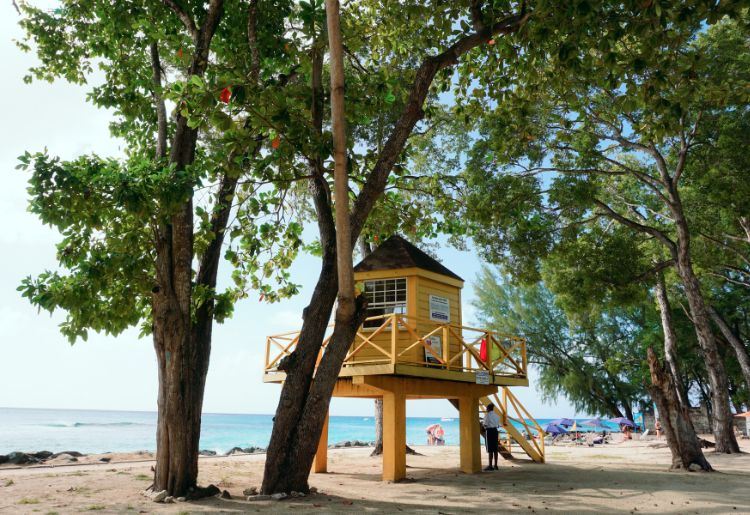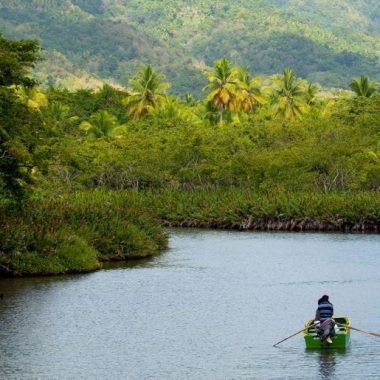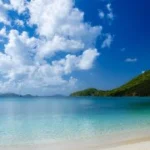Millions of people visit beaches in the Caribbean annually to relax on the sand, frolic in the sea or enjoy their favourite water activities. As a result, beach safety should be at the forefront of every person who enters the ocean. With every activity, there is at least one risk and caution should be paramount when in the sea.
Risks at the Beach
Before you dive into any of the beaches in the Caribbean, you should be aware of the possible risks and the steps that you can take to ensure that you and your loved ones are safe. Additionally, you should always aim to bathe at beaches that are supervised by lifeguards.
One of most common risks at the beach is drowning. Drowning in the ocean is sometimes caused by rip currents, which can pull the swimmer out to sea. It can also be caused by a medical emergency such as a seizure, heart attack, or stroke which may render the swimmer unconscious. Another factor in drownings is when people become intoxicated by drugs or alcohol, go into the water, and thus become disoriented.
Lifeguard Supervised Beaches in the Caribbean
To assist with the mitigation of drowning risks in the sea, many Caribbean countries and beach resorts have lifeguards on duty. Lifeguards are faced with the mammoth task of patrolling the beaches, enforcing rules and monitoring the ocean for anyone who gets into difficulty. Lifeguards in the Caribbean are skilled professionals who are trained to prevent, identify and respond to emergencies in the water.
Here is a list of lifeguard supervised beaches in the Caribbean:
Beaches with Lifeguards in Barbados
The lifeguard supervised beaches in Barbados are:
- Bath Beach (Bath, St. John)
- Bathsheba (St. Joseph)
- Batts Rock (St. Michael)
- Brandon’s Beach (St. Michael)
- Enterprise (Christ Church)
- Folkestone (St. James)
- Greaves End/Pebbles (St. Michael)
- Brownes Beach – North (St. Michael)
- Brownes Beach – South (St. Michael)
- Holetown (St. James)
- Royal Pavilion (St. James)
- Needham’s Point (St. Michael)
- Crane Beach (St. Philip)
- Maxwell Beach (Christ Church)
- Dover Beach (Christ Church)
- Rockley Beach (Christ Church)
Beaches with Lifeguards in Bermuda
The lifeguard supervised beaches in Bermuda are:
- Horseshoe
- John Smiths
- Clearwater Beach
- Turtle Beach
Beaches with Lifeguards in Curacao
The lifeguard supervised beaches in Curacao are:
- Cas Abao Beach
- Playa Lagun
- Playa Porto Marie
Beaches with Lifeguards in Grenada
The lifeguard supervised beaches in Grenada are:
- Bathway Beach
- Grand Anse Beach
- Paradise Beach (Carriacou)
Beaches with Lifeguards in Guadeloupe
The lifeguard supervised beaches in Guadeloupe are:
- Anse Tabarin
- Plage De L’Autre Bord
Beaches with Lifeguards in Martinique
The lifeguard supervised beaches in Martinique are:
- Saint Luce Beach
Beaches with Lifeguards in the Jamaica
The lifeguard supervised beaches in Jamaica are:
- Bluefields Beach (Westmoreland)
- Burwood Beach (Trelawny)
- Discovery Bay Beach (St. Ann)
- Fort Clarence Beach (St. Catherine)
- Frenchman’s Cove (Portland)
- Harmony Beach (St. James)
- James Bond Beach (St. Mary)
- Long Bay Beach (Westmoreland)
- Sandals South Coast (Westmoreland)
Beaches with Lifeguards in Nevis
The lifeguard supervised beaches in Nevis are:
- Pinneys
Beaches with Lifeguards in Puerto Rico
The lifeguard supervised beaches in Puerto Rico are:
- Balneario de Carolina (Carolina)
- Boqueron Beach (Cabo Rojo)
- Cana Gorda Beach (Guanica)
- Cerro Gordo Beach (Vega Alta)
- El Escambrón (San Juan)
- Flamenco Beach (Culebra)
- La Montserrate (Luquillo)
- Playa Caracas (Vieques)
- Playa Isla Verde (Carolina)
- Puerto Nuevo (Vega Baja)
- Sun Bay Beach (Vieques)
Beaches with Lifeguards in Saint Vincent and the Grenadines
The lifeguard supervised beaches in Saint Vincent and the Grenadines are:
- Rawacou Beach
- Brighton Salt Pond Beach
- Villa Beach
Beaches with Lifeguards in Tobago
The lifeguard supervised beaches in Tobago are:
- Back Bay
- Bloody Bay
- Castara Bay
- Pigeon Point
- Salybia
- Store Bay
Beaches with Lifeguards in Trinidad
The lifeguard supervised beaches in Trinidad are:
- Macqueripe Beach
- Mayaro
- Maracas
- Manzanilla
- Queen’s Beach
- Tyrico
- Las Cuevas
- Los Iros
- Vessigny
- Quinam
Beaches with Lifeguards in the United States Virgin Islands
The lifeguard supervised beaches in the United States Virgin Islands are:
- Lindqvist Beach (St. Thomas)
- Magens Bay (St. Thomas)
- Trunk Bay (St. John)
Types of Beach Warning Flags
Depending on what time you go to the beach, you may see flags posted in the sand. Even though a beach may not have a lifeguard, flags may be present. All flags are important and each one conveys a specific message. Please note the different color flags and their meanings below:
Green Flag: Calm waters that are safe for swimming and water activities
Yellow Flag: Caution is recommended when swimming
Red Flag: Dangerous conditions are present, including large waves and strong rip currents
Two Red Flags: Extremely dangerous conditions and swimming is not recommended
Purple Flag: Marine creatures such as jellyfish, algae, or sharks are present, and swimming is not recommended
Red Flag Over Yellow Flag: Safe area for swimming with lifeguard supervision
Black and White (Quartered Flag): Watercraft use the area and swimming is prohibited
Yellow Flag with Black Ball: Watercraft use is prohibited
Orange Flag or Orange Windsock: Strong onshore and offshore winds
Red and White (Quartered Flag): There is an emergency, and you should evacuate the water immediately
Beach Safety Tips
For anyone visiting the beaches in the Caribbean, please be cautious. There are a few precautions that can be taken to ensure safety in and around the ocean. In addition to swimming at lifeguard supervised beaches in the Caribbean, here are ten beach safety tips to note:
- Swim at beaches with lifeguards on duty
- Follow the guidelines and instructions from the lifeguards
- Always watch children closely when they are near to or in the water
- Pay attention to the beach warning signs and adhere to them
- Do not consume alcohol or drugs if you plan on going into the ocean
- Avoid jumping or diving into waters that you are not familiar with
- After eating, wait at least one hour before going into the ocean
- If you are not a strong swimmer, do not venture into water higher than your waist
- Avoid swimming during bad weather, high winds or after heavy rain
- Be careful when using floatation devices such as inflatable tubes, rings and toys
References
Barbados Today: Beach Users Urged to Use Lifeguard Supervised Beaches
Beachgoer: What do All these Beach Flags Mean?
TNT Island: Water Safety Information
Centre for Disease Control and Prevention: Drowning Prevention
Image: Chloe Christine via Unsplash










